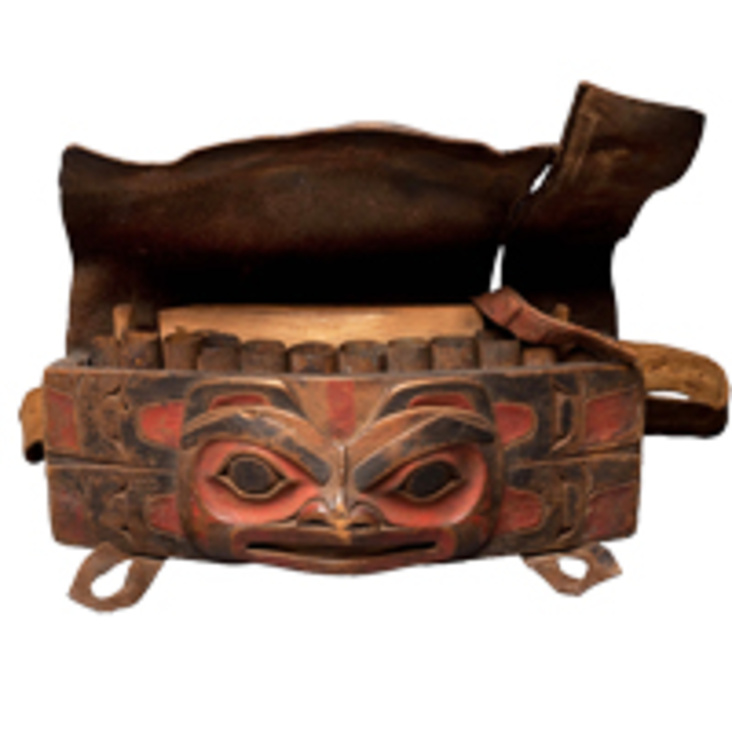
In
summer 2014, the BGC received an NEH Scholarly Editions and Translations grant
of $307,000. The funds are supporting the preparation for publication of an
annotated print edition of The Social Organization and the Secret Societies of
the Kwakiutl Indians (1897) by anthropologist Franz Boas. Project Director
Aaron Glass explains the project.
What is the project and why is it important?
My international and intercultural collaborative team plans to reprint and annotate Boas’s seminal 1897 monograph, a synthesis of his first decade of research on the Northwest Coast and one of the first holistic ethnographies based on field work. The text brought together data on Kwakwaka’wakw social structure with art and material culture, detailed narratives in the Kwak’wala language, photographs taken in situ in British Columbia and at the 1893 Chicago World’s Fair, transcribed songs, eyewitness description of ceremonial performances, and extensive contributions from Boas’s indigenous collaborator George Hunt. Framed with scholarly essays and contemporary Kwakwaka’wakw perspectives, the new edition will reunite the original text with widely distributed archival and museum collections that shed new light on the book and its wide-ranging legacy. This long-hidden material provides surprising revelations about the fieldwork behind Boas’s foundational volume, the central nature of Hunt’s co-authorship, and the degree to which it provided a blueprint for a subsequent four decades of ethnographic research. The critical edition will represent a major new resource for both scholars and non-specialist readers, while returning cultural patrimony to its indigenous inheritors.
How did you get interested in this?
I have been working closely with the Kwakwaka’wakw people for over twenty years. In the course of previous research—for my dissertation and for a collaborative project to produce a digital database to document a large Kwakwaka’wakw collection in Berlin—I came across a wealth of museum records and archival material pertaining to the production and influence of the 1897 book. A number of colleagues who specialize in the anthropology of Northwest Coast Native peoples shared similar discoveries with me and so we decided to work together with one another and with the Kwakwaka’wakw to pool our resources and knowledge.
Who are your collaborators?
My primary project partner is Dr. Judith Berman. She is a linguistic anthropologist at the University of Victoria who specializes in Northwest Coast ethnopoetics and the Boas/Hunt corpus of textual materials. Our research team also includes Dr. Ira Jacknis, a visual anthropologist at U.C. Berkeley who is working on the book’s photography; Dr. Rainer Hatoum, an independent scholar in Berlin who is tracking down extant cylinder recordings of music and translating Boas’s idiosyncratic shorthand system; and Barbara Taranto, an independent digital media specialist who is designing the project’s technical architecture. We are also working closely with two Kwakwaka’wakw artists and community researchers, Andy Everson and Corrine Hunt, as well as project liaisons on 4 Kwakwaka’wakw reserves in British Columbia. Major institutional partners include the American Museum of Natural History, American Philosophical Society, Archive of Traditional Music, The Field Museum, National Anthropological Archive, National Museum of Natural History, and U’mista Cultural Centre.
What is unique about the work?
Aside from revealing the hidden history of Boas’s famous monograph and providing public access to widely distributed archives, our NEH-supported critical print edition will also serve as the foundation for a planned open-access digital edition that will harness interactive multimedia to re-assemble the rich and diverse archival sources. Currently, work in the digital humanities is being driven by scholars in History and English working primarily with manuscript collections related to famous authors, politicians, or scientists. This will be an unprecedented effort within Anthropology and the social sciences, promising new ways of using digital media to link together disparate archives, museums, textual repositories, and contemporary Native communities in order to produce a critical historiography of the book as well as to recuperate long dormant ethnographic records.
How does it relate to the mission of the BGC?
Franz Boas is the foundational figure in North American anthropology; he pioneered the modern notion of cultural relativism, attacked racist theories of social evolution, and revolutionized the ethnographic museum. The 1897 monograph was the most comprehensive statement of his Kwakwaka’wakw research during his lifetime, and was directly influential on generations of scholars and museum curators. In it, Boas tied material culture into the fabric of social and ceremonial life, arguing strongly that we can only understand any particular object from within the total cultural and specific historical context in which it is or was embedded. Our project will not only expand the insights of his original ethnography by drawing on his and Hunt’s unpublished materials, it will contribute to a larger appreciation of Boas’s role in creating a template for contemporary, interdisciplinary, material culture studies as it is practiced at the BGC.





